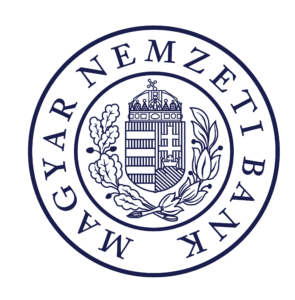We conducted an interview with the supervisor of one of our successful applicants for the academic year of 2023/2024, Univ. Prof. Dr. György Károlyi, full professor of the Institute of Nuclear Techniques at the Faculty of Natural Sciences at BME who will work in tandem with Ms Hedvig Vranek, a student of fashion and textile design at the Metropolitan University (METU) within the framework of a project entitled “The transient charm of decaying chaos”. We asked the professor about the programme, his relationship with arts, the upcoming collaboration, the project theme, and his motivations.
Why did you decide to be involved in this project?
I was very curious, that was the main reason. I find it really interesting to combine various areas and disciplines and see what comes out in the end. This is the first time I have been involved in a scheme like this.
Why did you find this programme interesting?
Most of all, the very idea of linking such entirely different fields. I really would like to see how I can work together with someone who represents a wholly different field. As far as natural sciences are concerned, I have already been involved in similar collaborations: I have worked together with people holding different qualifications, having different views and it was very inspiring to examine the same topic from all these new perspectives.
What’s your personal relationship with arts?
There are quite a few subfields in arts that I enjoy and “consume”, but it is music that captivates me most. I go and see concerts, plays, movies and occasionally even exhibitions, because I like spending time looking at paintings, drawings and photographs. Yes, I’d say these genres interest me most. Within the framework of the residency programme, I will be working with a fashion designer. I assume it will be incredibly interesting as I have basically no prior experience in this field.
Have you ever tried your hand at any artistic genres? Do you pursue any activity in the field of art in your spare time?
Not seriously, no. I have already made up stories and tales, or have drawn little figures, but nothing of the kind that would have been worth showing to anyone. I am predominantly interested in arts as a recipient.
What are your expectations? What do you think will be the most inspirational part of your cooperation?
I have already read Hedvig Vranek’s ideas and plans: they look really compelling. I expect that working together will be a process where both of us will have to move a little closer to the other and try to have a better understanding of the other one’s field. I am curious to see what common ground we will be able to find. I will do my best to talk a lot with Hedvig and acquaint her with like-minded people or ones that work in my field. I will also do everything in my capacity to provide her with information and be a source of inspiration. I am not quite sure just yet how this residency programme will look like. I saw some of the exhibitions last year in the aula of Building K but since our tandem work is very individual, I doubt that we could extrapolate the outcomes on the basis of earlier achievements.
Looking at the title, the description of “chaos” seems rather interesting. What aspects do you think the lay audience would find most attractive in this topic?
Perhaps, the most exciting issue is the non-predictability of systems that we assumed were predictable. Chaos theory focuses on systems we are in fact familiar with, for which we know the underlying patterns and equations, and based on which we should, in principle, be able to predict what will happen – but curiously, we cannot. These systems can be characterised by a high level of initial uncertainty, and any inaccuracy in our calculations will have serious consequences. To illustrate this phenomenon, the butterfly effect is often used in popular literature, i.e. whether the flapping of the butterfly’s wing can cause a tornado. There are very similar phenomena in chaotic systems despite the fact that the underlying laws are very simple. A simple example is grandma’s pendulum clock. We can see that the pendulum swings at a steady pace. But if all we do is hang another pendulum at the bottom of the original pendulum, its behaviour will be impossible to predict. The topic I came up with for the programme also deals with similar systems where a very simple system can evolve into complex behaviour.
How did you come to be interested in this area?
I studied physics at Eötvös Loránd University. When I had to write my master thesis, I had already developed an interested to these subjects. My master thesis was supervised by Tamás Tél who knows everything there is to know about this topic. We have been working together ever since, our cooperation has defined my whole career, for which I am eternally grateful.
Cooperation schemes such as the BME Art Residency Programme are now available all over the world. Preparing for the project now, have you looked at other programmes or are you planning to get inspired by other similar examples?
No, I am not familiar with any other residency programmes. Perhaps I could compare these with what I saw in Oxford, during my study visits: the colleges of the university bring together the representatives of different disciplines who are continually exposed to impacts from one another. In such context, one can hear pretty unorthodox opinions about one’s discipline from people with completely different backgrounds and interests, but one can also learn quite a lot from such interdisciplinary discussions. I presume this residency programme will also present us with new opportunities to get acquainted with other areas and attempt to get to know what colleagues in these fields do. In my opinion, mutual impacts and collaborations can only yield positive outcomes.
Szonja Bakos – Bettina Odegnál


